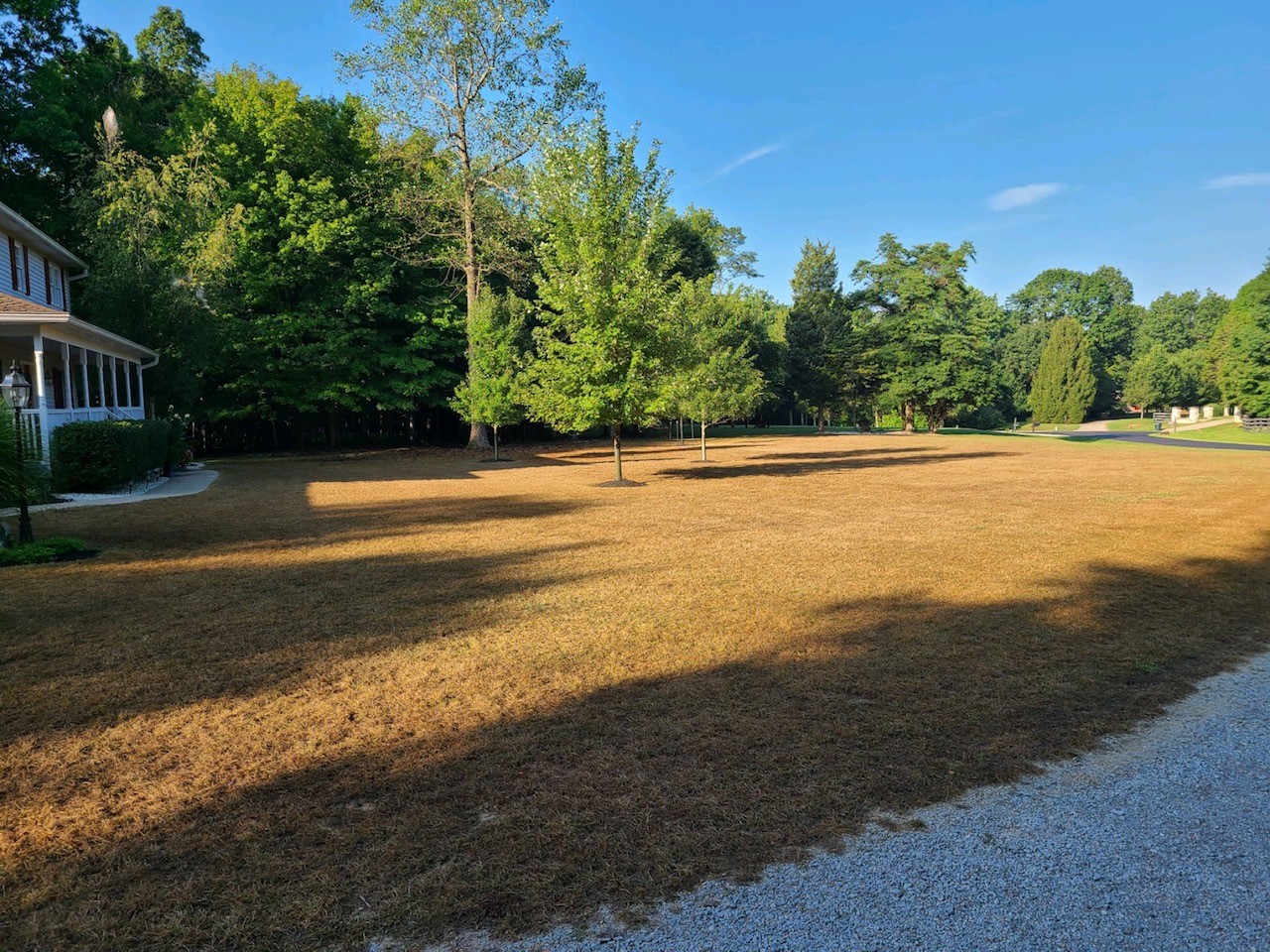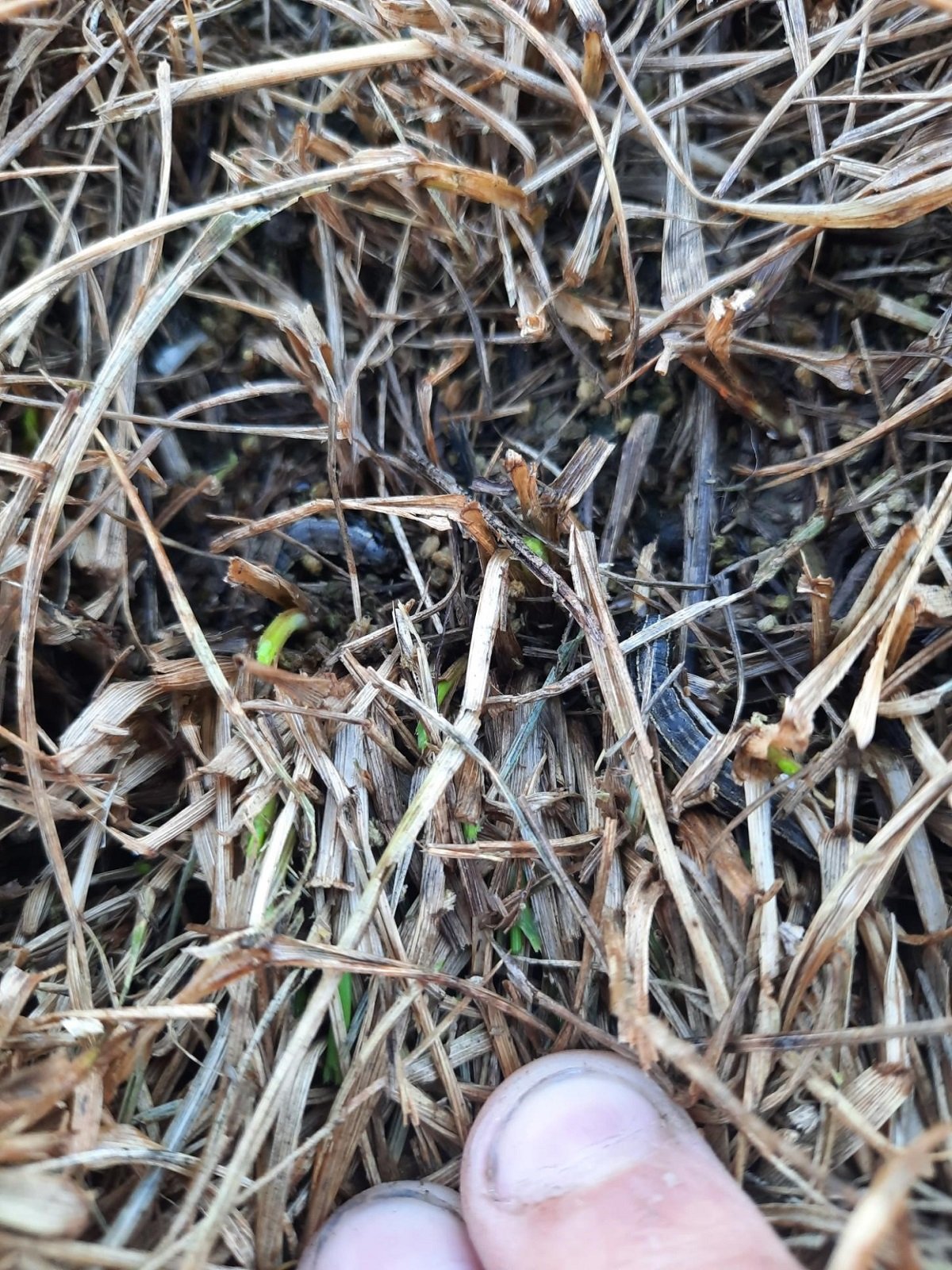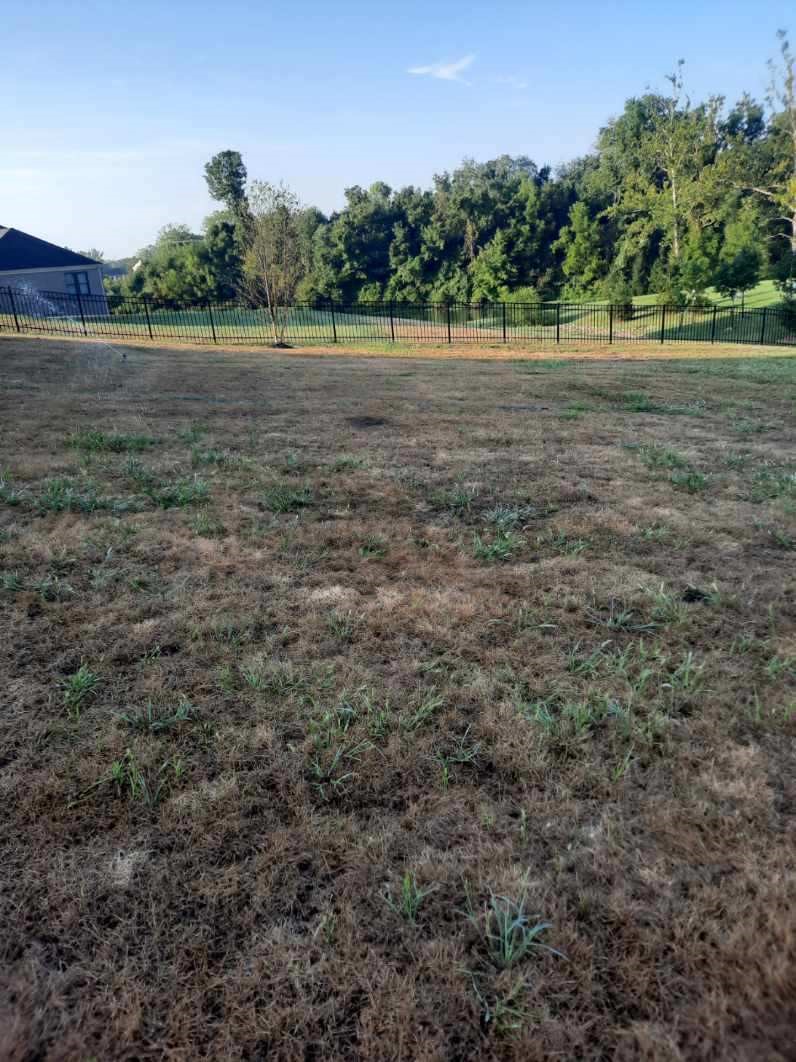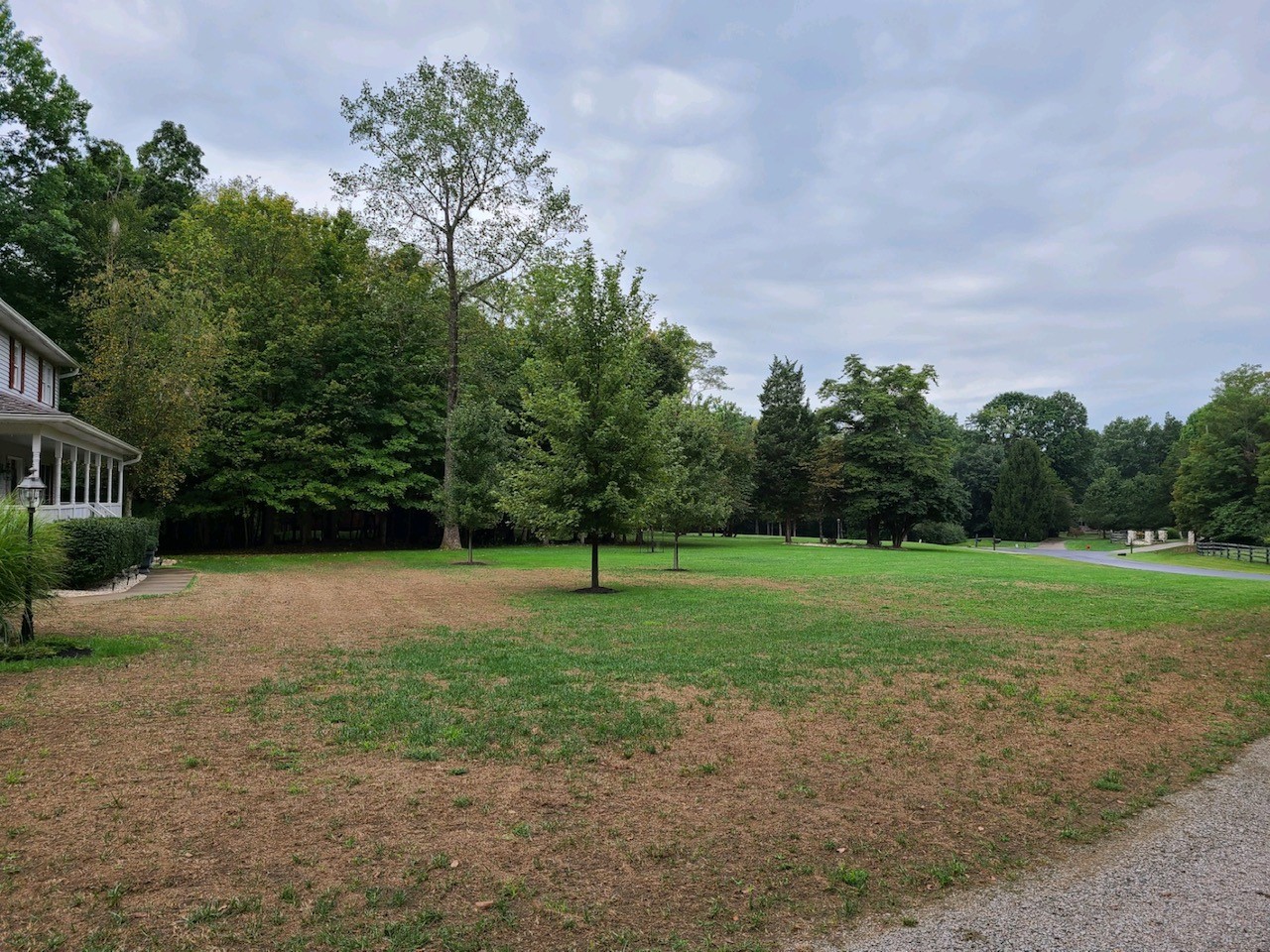While you might have found the children’s book The Hungry Caterpillar charming, we know that if you have experienced fall armyworms on your lawn, you likely didn’t find it nearly as cute. Unfortunately, that book about a tiny caterpillar born hungry who eats everything in sight is a bit too much like what can really happen with fall armyworm damage.
When these pests march their way into the lawn, they are highly destructive. Working quickly, armyworms can decimate a lawn in a matter of days.

There are, in fact, various species of armyworms that impact lawns. When we speak of armyworms in this article, we’re referring to fall armyworms found in Ohio.
Whether you’ve already dealt with them before or you’re just worried about fall armyworms in the grass, we want to help educate you about these pests and how to deal with them. Though they’re a force to be reckoned with, there are some ways you can fight back against fall armyworms.
What are Armyworms The Lawn?
Fall armyworms are the larvae of a particular moth. And although they have the name “worm” in their moniker, they are actually a caterpillar.

True to the word “army” in their name, they travel as a large group. Unfortunately, this is also what makes them so destructive. One armyworm might not be that big of a deal but they always travel in masses.
Fall armyworms are light green or tan in color during their early growth stages and turn dark green or brown in later stages. They have a distinct “Y” near their head which is how they are most commonly identified.

While, unlike the Hungry Caterpillar, armyworms won’t eat fruit chocolate cake, ice cream, or pickles—they will devour your lawn like it’s a 24/7 buffet.
Recognizing Fall Armyworm Damage
Even though they travel in such large groups, these pests can be really stealthy at first. Because of that, fall armyworms damage is sometimes noticed ahead of the actual pests. The first sign of trouble is when you start to notice small patches of brown grass with the edges of the blades chewed. Some of the blades might be entirely consumed.
As the grass is eaten, it will begin to die.

Of course, it’s important to remember that grass turning brown can be related to other problems as well, including fungal disease. As with any potential lawn problem, proper identification will be key.
Sometimes, people notice an increase in bird activity on their lawns during a fall armyworm infestation. Since birds eat these caterpillars, a larger presence of birds could indicate an issue and it’s worth looking into.
It’s important to note that while birds will help pick off some of these pests, they won’t eat enough to get your lawn healthy again.
A Word on the Fall Armyworm Influx in Ohio
We want to mention that in our area, it had previously been rare to find armyworms in the grass. This pest has always been a problem in southern states that we simply didn’t have to deal with.
But in the fall of 2021, when this article was originally published, we had recently experienced a massive influx of fall armyworms in Ohio and Northern Kentucky, a semi-tropical species that had traveled into our region via the jet stream. It’s been surmised that the increase in storm activity has brought these pests to our region.
The truth is, those of us here at Oasis Turf & Tree had never seen anything like this before. Like other lawn care companies, and as the local cooperative extensions have reported, the phones were ringing off the hook with sightings of armyworms.
Unfortunately, the fact that fall armyworms made their way into our area this year means it is possible—and could potentially happen again. For that reason, it’s important to be prepared.
How To Get Rid of Fall Armyworms in Your Lawn
Fall armyworms are a worthy opponent, but taking quick action can make all of the difference.
We would advise that any time you see brown spots on your lawn, whether you know it’s from armyworm damage or not, that you give us a call or shoot us a text. We always want to see a photo and help you make a proper diagnosis quickly as time is of the essence with pests like armyworms.
If you’re experiencing a fall armyworm problem, we can apply a professional-grade curative product that will address the pests on contact.

Proper watering will also be important, particularly on very hot days. Since your lawn is already under stress from the armyworm damage, we don’t want to compound the issue with heat stress. We would advise a practice called syringing the lawn. This is when you apply a small amount of water to the turf during the mid-day heat. This helps to keep the grass cool during periods of intense heat stress.
The good news is that oftentimes when we catch a fall armyworm problem, the pests have only eaten the tissue of the grass blades (and the crown is still intact). If we can keep the crown (where the root turns into the blade) alive, we can help restore your grass. Syringing will assist with this.
While we can’t prevent fall armyworms entirely, we have found that our clients who were already using the Ant, Flea & Tick Pest Control program had less of an impact of fall armyworm damage than those who were not on that program.
Winning the Battle with the Very Hungry Fall Armyworms
We understand that the sudden appearance of fall armyworms in our region in 2021 was alarming. For Oasis clients who have felt as though they’ve done everything right, it felt unfair and frustrating to suddenly have brown spots.
Fortunately, we have seen amazing results with lawns bouncing back and we think it’s a testament to the fact that being on a good lawn care program will help lawns to stand up to unexpected problems like these.
Although there’s no way to entirely prevent armyworms, with early detection and a diligent lawn care company on your side, you can fight back. That means that even the hungriest of the very hungry fall armyworms won’t be able to win.
Want to learn more about professional lawn care services for your Cincinnati, Dayton, Ohio, or Northern Kentucky home? Request your quote, choose the lawn care program that’s right for you, and then sit back and relax as the pros help you get the lawn of your dreams without the worries.
Image source: fall armyworm on grass
